Daffodil / Narcissus catalogue
By teegee
1 comment
As I was cataloguing my daffodil picture file, and adding recent pictures to some I took last year, the thought occurred to me that this file could be a useful reference file in the GoYpedia.
It could be used as a pictorial guide to check out the colour, and flowering times of various varieties prior to purchasing.
So if any of the moderators think the same, then feel free to add it to the GoYpedia.
I thought I would start by explaining the classification jargon that you might see in a Daffodils / Narcissus sales catalogue.
.
.
.
Basically this data fits into three areas, and these are;
The division of which their are thirteen (see below)
The colour which is split into six colours (see below)
The flowering season of which there are six (see below)
The flower consists of the perianth (the petals)and the corona (the cup)
.
.
.
Division 1 – Trumpet Daffodils;
These have one flower to a stem, and the corona is as long or longer than the perianth segments.

Division 2 – Large cupped daffodils;
These have one flower to a stem, the corona ‘must’ exceed a third of the perianth length, but not exceed the peranths length.

Division 3 – Small cupped daffodils;
These have one flower to a stem,and the corona is less than a third the length of the perianth.

Division 4; Double Daffodils;
These have one or more flowers to a stem, and have either a doubling of the corona, or perianth or both.

Division 5 – Triandrus Daffodils;
These have N Triandrus characteristics, and usually have two or more pendant flowers per stem and reflexed perianths.

Division 6 – Cyclamineus Daffodils;
These have N cyclamineus characteristics, and one short necked reflexed flower, placed at an acute angle to the stem.

Division 7 – Jonquila and Apodanthus Daffodils;
These have jonquilla or apodanthus characteristics, and the stems can bear up to eight often scented, reflexed flowers, with either a cup, funnel or flared corona.

Division 8 – Tazzetta Daffodils;
These have tazetta characteristics, where the stems can bear up to twenty often fragrant flowers with spreading perianths.

Division 9 – Poeticus Daffodils;
These have Poeticus characteristics, and usually one often fragrant flower to a stem.
The perianth is normally white, and the short corona is usually yellow or green trimmed with red.

Division 10 – Bulbocodium Daffodils;
This division is for all Species and wild forms, and have bulbocodium characteristics.

Division 11 – Split corona Daffodils;
The cup or corona that is naturally split or separated usually for more than a half of its length.
(Not to be confused with varieties with pronounced frills).
.
.
Sub Divisions;
.
11a) Collar Daffodils;
Split-corona daffodils with the corona segments opposite the perianth segments; the corona segments usually in two whorls of three.

11b)Papillon Daffodils;
Split-corona daffodils with the corona segments alternate to the perianth segments; the corona segments usually in a single whorl of six.

Division 12 – Other Daffodil Cultivars;
Daffodil cultivars that do not fit the definitions of any of the above divisions.

Division 13; For Daffodils Species that a referred to by their botanical name

.
.
.
Daffodil Colour & Timing System;
To assist in the identification of colours and flowering times, the normal system is to use letters e.g.
W = White
Y = Yellow
G = Green
R = Red
P = Pink
O = Orange
E = Early season
EM = Early mid season
M = Mid season.
LM = Late mid season
L = Late season
W = Winter Flowering
.
.
Example;
A flower classified as; 2W-GYO (EM) denotes that the variety is an early mid season Div.2
It has a (W) white perianth (petals) and the corona (cup) has a (G) green centre, (Y) yellow middle zone and an (O) orange rim.

.
.
.
.
Catalogue;
.
.
Aircastle 3W-Y (m)

Altun Ha 2Y-YWW (m)

American Dream 1Y-P(m)

American Shores 1Y-P (m)

Angel’s Breath 5Y-Y

Arid Plains 3Y-O

Astrid’s Memory 3W-Y

Avalanche 8W-Y (em)

Best Friend 3Y-YYO

Bilbo 6W-GPP (L)

Blisland 9W-YYR (L)
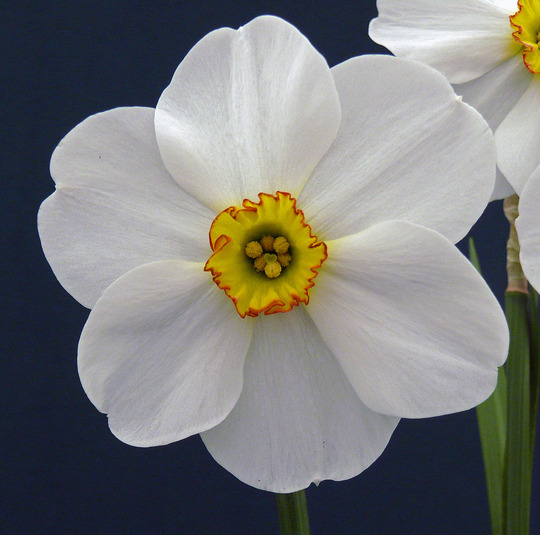
Bravour 1W-Y (e)-AGM

Cape Cornwall 2Y-YYO (m)

Cape Point 2W-P
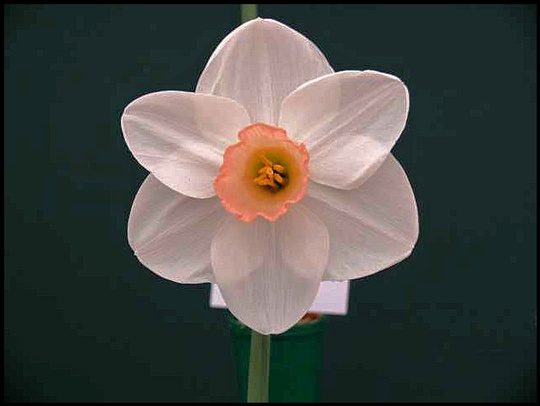
Carol Lombard 3W-YYO (L)

Chaste 1W-W

Cinnamon Ring 3W-WYO

Colonial White 2W-W (Lm)

Cool Evening 11W-P (m)

Crowndale 4Y-O (m)

Curly 2Y-Y (m)

Dailmanach 2W-P (Lm)
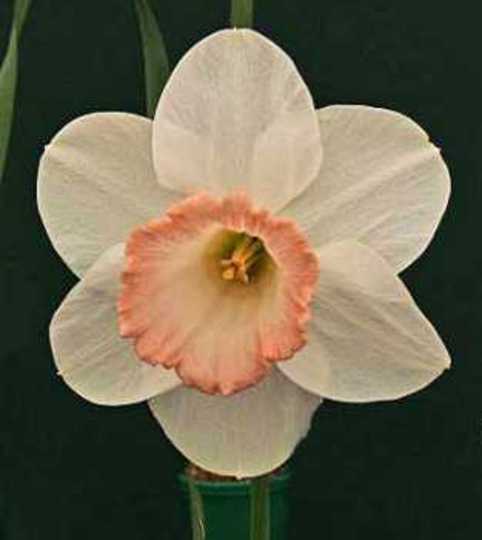
Dancing Queen 2W-P

Diamonds 3W-YO

Doctor Hugh 3W-GOO (L)

Doctor Jazz 2Y-ORR (em)

Dorchester 4W-P (m)

Eastern Promise 2W-WPP (m)

Entente 2Y-O

Entrepreneur 2W-P (m)

Euphonic Belles 5W-W

Fairy Chimes 5Y-Y

Fine Romance 2W-WWP (L)

Gay Kybo 4W-0 (Lm)

Gay Swain 4W-Y

Gin and Lime 1Y-WWY

Goffs Caye 2Y-WWY (m)

Golden Avalanche 8Y-Y (m)

Golden Bells 10Y-Y

Golden Rill 2Y-YY

Grand Choice 2W-WP (Lm)

Hexameter 9W-GYR (L)

High Society 2W-GWP (mL)

Ice Chimes 5W-Y

Ice Wings 5W-W (m)

Inverpoly 2W-W

Irish Silver 7Y-YW

Jersey Roundabout 4W-Y (m)

John Peace 3W-P (m)

Kiwi Magic 4W-WY

Kokopelli 7Y-Y

Lady Eve 11aW-GPP (e)

Lakeland Fair 2W-GPP (m)

Lilac Charm 6W-P (Lm)

Little Sentry 7Y-Y

Merlin 3W-YYR (L)

Mesa Verde 12Y-GYY

Midas Touch 1Y-Y (m)

Minnow 8W-Y

Misty Glen 2W-GWW (m)

Moon Shadow 3W-GYY (m)

n.poeticus 13W-YR

Narcissus triandrus var.triandrus 13W-W

Odd Job 12W-O

Orbital Pink 3W-GWP

Oregon Pioneer 2Y-P

Pacific Coast 8Y-Y (m)

Pacific Rim 2Y-YYR (m)

Paper Whites 8W-W

Pheasant Eye 9W-YR

Pink Silk 1W-P (m)

Pipe Major 2Y-O (L)

poeticus helenicus 13W-YR

poeticus 13W-YR

Polgooth 2W-WWP (L)

Purbeck 3W-YOO (m)

Rainbow 2W-WWP (e)

Replete 4W-P (e)

Ringleader 2W-YYR (m)

Rosanna Gold 11Y-Y

Sandy Cove 2Y-GWO

Santana 2Y-YO

Sargeants Caye 1YYW-WWY (m)

Scarborough 3W-W

Seedling 1Y-GWY
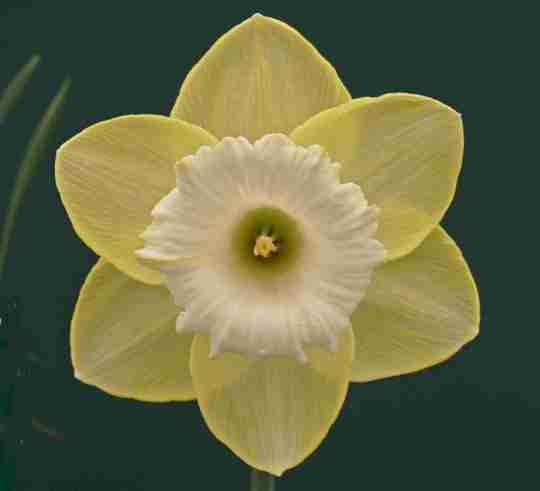
Seedling 4W-Y

Segovia 3W-Y

Sherpa 1W-W (L)
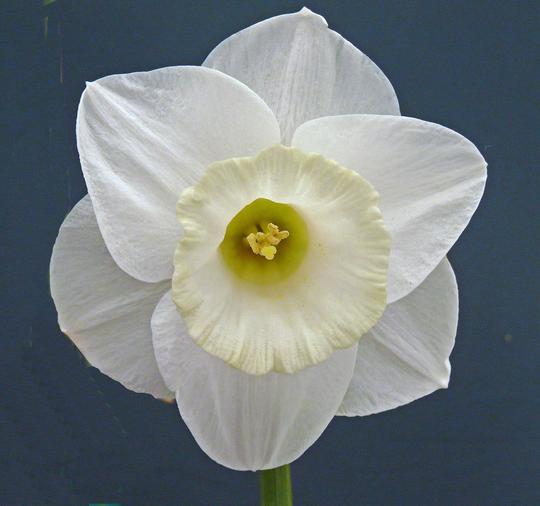
Shockwave 2Y-O

Silent Valley 1W-W (m)

Silverwood 3W-W (L)

Stanway 3Y-ORR (L)

Sylvia Ann 3Y-YYO (m)

Three of Diamonds 3W-GWO

Triple Crown 3Y-GYR (m)

Trumpet Warrior 1YYW-WWY (Lm)

Tutankhamun 2W-W (L)

Whisky Mac 2YYW-Y

York Minster 1Y-O (m)

 11 May, 2012
11 May, 2012 3 likes
3 likes
More blog posts by teegee
Previous post: My Greenhouse in January.
Next post: Plotting the plots
Comments
Featured on
Recent posts by teegee
- Harmony Gardens
23 Nov, 2012
- Tee Gee's Travels continued;
20 Nov, 2012
- Tee Gee's Travels
11 Nov, 2012
- RHS Rosemoor
6 Nov, 2012
- RHS Wisley
31 Oct, 2012
- My garden today!
19 Oct, 2012
Members who like this blog
-
Gardening with friends since
9 Aug, 2009 -
Gardening with friends since
22 Oct, 2008 -
Gardening with friends since
16 Jul, 2010


This is a fascinating blog. I have lots of different narcissus and daffodils in the garden and not all identified. I will be looking at them more closely from now on and try and get the codes right for them. I take it that every catalogue uses the same numbers and letters to identify specific plants. I will add it to my favourites and recommend it go in Goypedia. Are these professional trade catalogues not available to the general public. Thanks teegee
12 May, 2012